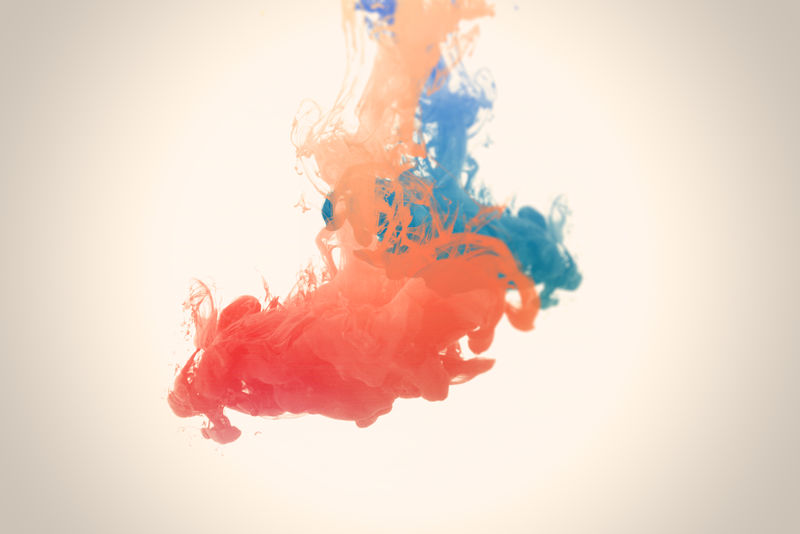The continuous dyeing machine is a mass-production machine and requires the stability of the silicone oil used during production. Some factories are not equipped with a cooling drum when drying the continuous dyeing machine under it, so the temperature of the fabric surface is too high and not easy to cool, the silicone oil used should have temperature resistance. At the same time, its dyeing process will produce a chromatic aberration and it is difficult to repair back. As the dye back to repair the chromatic aberration will add a whitening agent in the rolling barrel, which requires the silicone oil to match the dye and whitening agent and no chemical reaction. So what chromatic aberration occurs in the continuous dyeing process? And how can it be controlled? What kind of silicone oil can solve it?
Types of chromatic aberration arising from cotton long car dyeing
The chromatic aberration in the output of the cotton continuous dyeing process generally consists of four categories: chromatic aberration of the original sample, before-and-after chromatic aberration, left-center-right chromatic aberration, and front-and-back chromatic aberration.
1. The chromatic aberration of the original sample refers to the difference in hue and depth of color between the dyed fabric and the customer's incoming sample or standard color card sample.
2. Before-and-after chromatic aberration is the difference in shade and depth between successively dyed fabrics of the same shade.
3. The left-center-right chromatic aberration refers to the difference in color tone and depth of color in the part of left, center, or right of the fabric.
4. The front-and-back chromatic aberration refers to the inconsistency of the color phase and depth of color between the front and back sides of the fabric.
How are chromatic aberrations in the dyeing process prepaid and controlled?

Chromatic aberration in the original samples is mainly caused by an unreasonable choice of dyestuff for color matching and improper adjustment of the prescription during machine dyeing. The following precautions are taken to prevent the unreasonable choice of dyestuff for color blocking when imitating small samples:
The number of dyes in the prescription should be kept to a minimum, as different dyes have different coloring properties, and reducing the number of dyes can reduce the interference between dyes.
In the prescription, try to use dyeing and blending that is closer to the original sample.
Try to use dyes with similar dyeing properties.
The choice of two-phase depth between polyester and cotton: when dyeing light colors, the depth of polyester should be slightly lighter and the depth of cotton should be slightly darker. When dyeing dark colors, the depth of polyester should be slightly deeper, while the depth of cotton should be slightly lighter.


In the finishing, the before-and-after chromatic aberration of the fabric is mainly caused by four aspects: chemical materials, the performance of machinery and equipment, the quality of semi-products, process parameters, and changes in conditions.
Dye fabrics of the same shade using the same pre-treatment process. When dyeing light colors, it is important to choose a grey fabric with a consistent whiteness, as often the whiteness of the grey fabric determines the color light after dyeing, and when using the disperse/reactive dyeing process, it is particularly important that the PH value is consistent from every batch of fabric. This is because changes in the PH of the grey fabric will affect the PH changes when the dyes are coupled, resulting in a before-and-after chromatic aberration in the fabric. Therefore, the consistency of the before-and-after chromatic aberration of the fabric is only ensured if the grey fabric before dyeing is consistent in its whiteness, gross efficiency, and PH value.


The left-center-right color difference in the continuous dyeing process is mainly caused by both the roll pressure and the heat treatment to which the fabric is subjected.
Keep the pressure on the left-center-and-right side of the rolling stock the same. After the fabric is dipped and rolled in the dyeing solution, if the roll pressure is not consistent, it will cause a difference in depth between the left, center, and right sides of the fabric with an unequal amount of liquid.
When rolling disperse dyes such as the emergence of the left middle right color difference should be adjusted in time, never set in the set of other dyes to adjust, so that the left middle right of the fabric will appear in the color phase of the difference, this is because the polyester and cotton color phase can not be completely consistent.


In the continuous dyeing and finishing of polyester-cotton blended fabrics, the difference in color between the front and back of the fabric is mainly caused by the inconsistent heat on the front and back of the fabric.
In the drying process of fabric dip dyeing liquid and hot melt fixing, it is possible to produce front-and-back chromatic aberration. The chromatic aberration of the front side is due to migration in the dye; the chromatic aberration of the backside is due to a change in the conditions of the dye's hot melt. Therefore, to control the front-and-back chromatic aberration can be considered from the above two aspects.
Post time: Feb-25-2022

